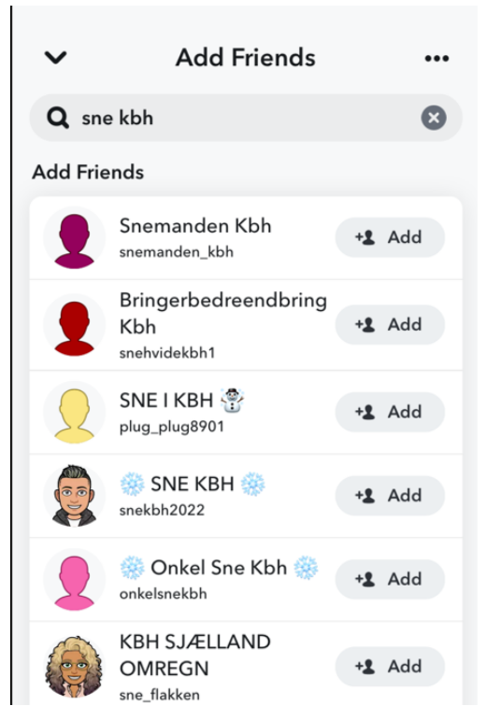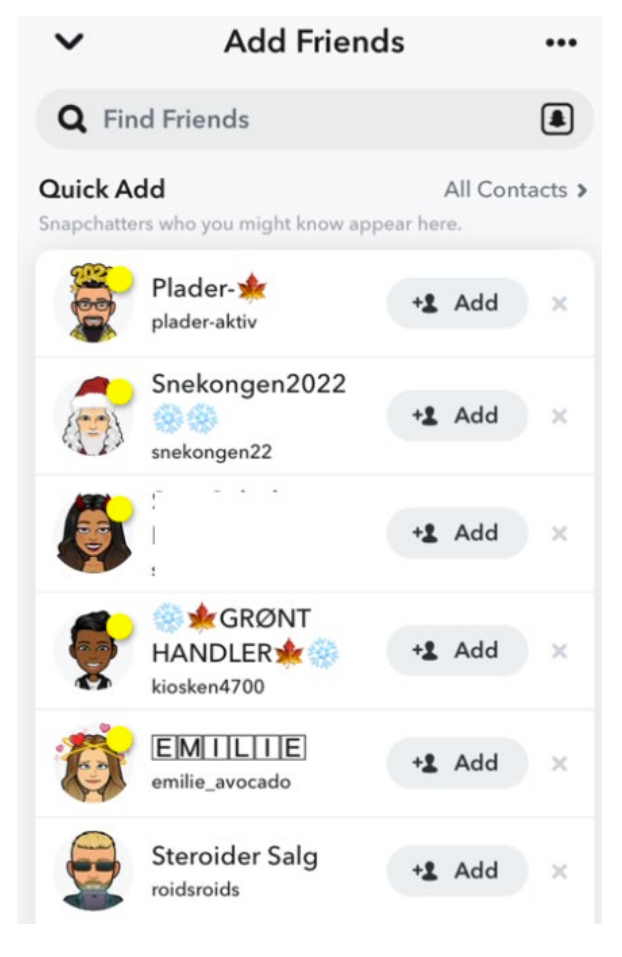Dynamics of Social Media drug markets
DrugsJakob Demant & Kristoffer Aagesen , Department of Sociology, University of Copenhagen Published 24 Jan 2024
The escalating concern over social media's influence on drug-related activities, especially among young people, underscores the need for a thorough examination of the evolving landscape. The past five years have witnessed a significant shift marked by increased accessibility to illicit substances and altered patterns of engagement, prompting a nuanced exploration of the current state of social media drug markets.
Media coverage and research have linked social media exposure to a surge in young people’s interest in purchasing illicit substances. More recently, stories have emerged identifying drug-dealing activities directly on social media platforms. This phenomenon not only broadens the potential reach of drugs but also introduces a diverse array of substances, tempting users to explore beyond their initial preferences—a pattern reminiscent of observations on darknet markets.
Insights from Previous Studies
Previous research by Demant and Bakken provided a picture of the functioning of social media digital drug markets, emphasizing the limited barriers to accessing drug-related content. These studies, focusing on the Nordic countries Denmark, Sweden, and Iceland, revealed a transition from a relation-based model, where buyers had to know or get referred to a dealer, to a more open market on platforms like Facebook and Instagram. This shift mirrored developments in Australia, indicating a global trend.
Current markets
The documentation of app- and social-media-based drug dealing since 2018 has sparked considerable debate in various spheres. Anticipating the impact of heightened platform moderation, we examined potential displacements and transformations in the market dynamics. Our expectation was that increased moderation might have led to a reversal, steering social media drug markets away from openness and back towards a more hybrid model, balancing open and locally embedded closed styles.
Our report, published in 2023, delves into understanding the current landscape of social media drug markets, analyzing how these markets have evolved over the past five years. Through immersive digital ethnography, we sought out drug markets on every major social media platform. Thus, we documented drug availability on different social media, from a user perspective, as well as how platform structures and policies helped or hindered drug access.
Platform-specific findings
By studying Facebook and Instagram, we found notable improvements in moderation compared to earlier research. Basic searches for drug-related content yielded no access, suggesting a positive shift in Meta’s moderation strategies. However, our new and ongoing research finds that active drug markets are again popping up on Danish Facebook in closed and semi-private groups under new codenames. This finding highlights the adaptability of social media drug markets, where actors (drug sellers) are very innovative in their ways of working within online environments. It also points towards the importance of active and continuous development of content moderation strategies.
On Snapchat, we found significant drug-selling activity in Denmark, Norway, and Sweden. The app’s search field, combined with easy sign-up and customizable usernames, makes it very easy for users to find barely covert or overt dealer profiles selling most kinds of drugs (Picture 1).

Picture 1. Results for searching ‘sne kbh’ (snow Copenhagen). The first result is called ‘the snow man kbh’; the name of the next one reads ‘better delivery than bring (a local delivery company)’, with a handle called ‘snow white Copenhagen 1’. All the results are from Copenhagen Cocaine dealers.
Our research profiles were added and added by numerous active sellers advertising and delivering almost every conceivable drug, from party drugs like MDMA or cocaine to opioids and body-enhancing drugs like steroids and weight loss drugs. Not only is a wide network of drug dealers accessible through simple searches, but Snapchat’s friend recommendation algorithm also actively pushes users to expand their personal dealer networks.
Once a single dealer is added, the app will suggest new dealers and new drugs to the user. Our newest research suggests that this mechanism also applies to customers in grey markets such as snuff or vape markets, as shown in picture 2.

Picture 2.
Recommended friends. Most profiles seem to be dealers. The first profile advertised “bricks” of hash using the maple emoji to resemble a hemp leaf. The handle includes the word active, as opposed to inactive profile. The next one is called ‘the king of snow 2022’ with two ‘snow flake’ emojis. Both the Danish word for snow and these emojis are associated with cocaine. The last profile is called ‘steroids sale’. All profiles are Snapchats suggestions with no prior contact.
Reddit was also found to house broad and active drug markets. Due to the digital infrastructure on Reddit, these markets were organized into drug-dealing forums offering specialized discussions of sourcing, selling, and consumption of niche drugs. While these forums get shut down from time to time, they exhibit a certain level of stability.
This allows for very structured markets, with high levels of professionalism, which in some cases involved public reputation systems blacklisting bad dealers and customers. Diverse and niche drug offerings mixed with more normalized drugs expose users to the availability of other harder drugs. This potentially poses the risk of users drifting into more problematic drug use.
A complex interplay
Despite improved moderation on some platforms, the dynamics of social media drug markets have undergone substantial changes.
While Facebook and Instagram exhibit positive shifts, Snapchat has become a focal point for displaced activities, taking advantage of low moderation and helpful algorithms. This is particularly concerning due to its young user base. Drug markets are evolving into more hybrid forms, intertwining local and closed elements with the social affordances and technological structures of modern social media.
In conclusion, this report provides a comprehensive exploration of the multifaceted nature of social media drug markets, shedding light on their evolution and implications for users, law enforcement, and prevention efforts. The complex interplay of platform dynamics and user behavior necessitates ongoing vigilance and adaptability in addressing the challenges posed by these evolving markets.
The article is written by:
Jakob Demant (Associate Professor) and Kristoffer Aagesen (PhD scholar)
MOD-lab, Department of Sociology, University of Copenhagen
on the request of PopNAD
Limitations
Findings cannot conclusively prove the absence of drug markets on other platforms, only that these simple searches did not yield access. National differences in social media moderation and user behavior remain significant factors in hybrid drug markets. A general reluctance in cooperation from social media platforms limits a comprehensive understanding of current moderation policies and their effects.


